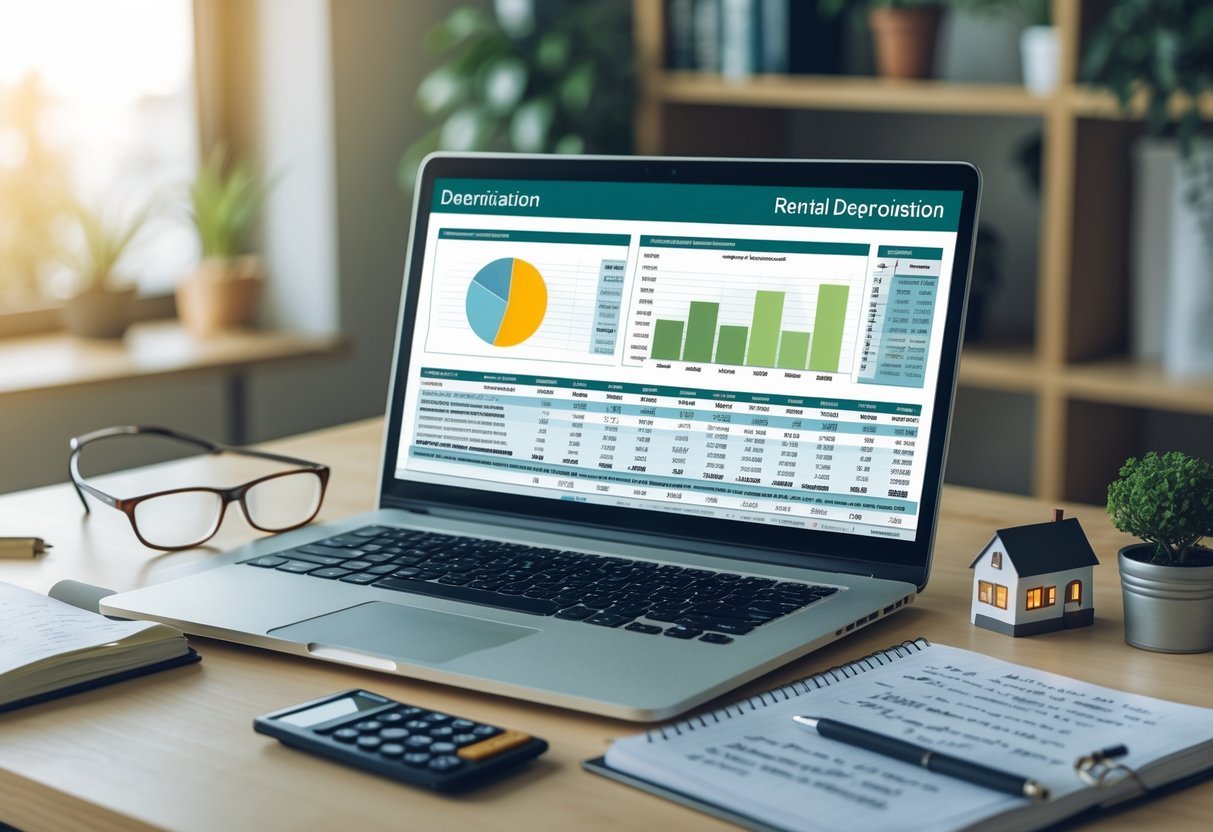Owning rental property comes with more than just collecting rent—you also need to plan your taxes throughout the year. Quarterly tax planning helps you stay organized and avoid surprises when it’s time to file your returns. By keeping up with your obligations every season, you can manage rental income, track deductible expenses, and maintain cash flow for your business.
Each quarter has its own set of tasks and deadlines, from estimated tax payments to updating your financial records. Adopting a seasonal approach lets you anticipate what’s next, prepare the right documents early, and take advantage of relevant deductions for landlords. The end goal is consistent tax preparedness and fewer last-minute complications.
Key Takeaways
- Quarterly tax planning prevents year-end tax surprises.
- Seasonal preparation ensures you meet important deadlines.
- Staying organized maximizes your potential tax benefits.
Essential Quarterly Tax Planning Strategies for Landlords
Seasonal tax planning helps you manage cash flow, comply with IRS requirements, and minimize your tax liability. By maintaining up-to-date records and using a proactive approach, you avoid surprises at tax time.
Understanding Rental Income and Deductible Expenses
You need to identify and track all types of rental income throughout each quarter. This includes rent payments, advance rent, and any security deposits you are allowed to keep. It’s essential to document each transaction clearly, as all rental income must be reported to the IRS.
Manage your deductible expenses regularly instead of waiting until year-end. Deductible expenses can include mortgage interest, repairs, property taxes, insurance premiums, utilities paid on behalf of tenants, and property management fees. Keep digital or physical copies of receipts and invoices to support your claims.
To simplify recordkeeping, consider using spreadsheets or rental management software that organizes income and expense categories. The IRS highlights the importance of accurate recordkeeping for income and expenses. Regular reviews each quarter make tax filing easier and allow you to spot trends, adjust your budget, and better plan for the next season.
Calculating Estimated Tax Payments
As a landlord, you’re responsible for making quarterly estimated tax payments if you expect to owe at least $1,000 in tax for the year after subtracting your withholding and refundable credits. Estimated payments cover both income tax and self-employment tax, if applicable.
Calculate each payment based on rental income received and allowable expenses for that quarter. Use IRS Form 1040-ES as a guide for your calculation, factoring in projected income, expenses, and any recent changes in the tax code or property performance. This helps avoid underpayment penalties and interest charges.
Many landlords find it useful to run a simple calculation at the end of each quarter using a table like this:
| Quarter | Income | Expenses | Net Income | Estimated Payment |
|---|---|---|---|---|
| Q1 | $____ | $____ | $____ | $____ |
| Q2 | $____ | $____ | $____ | $____ |
| Q3 | $____ | $____ | $____ | $____ |
| Q4 | $____ | $____ | $____ | $____ |
Consistently tracking and paying your quarterly estimates keeps your tax liability manageable and avoids last-minute stress.
Working with a Tax Professional
A tax professional specializing in real estate provides valuable guidance on estimated payments, deductions, and changing tax rules. They can forecast your tax liability for each quarter and make sure your calculations are precise, reducing the risk of errors on your tax return.
Meet with your tax advisor at least once per quarter, especially before major property transactions or repairs. Their input helps you maximize deductions, structure expenses appropriately, and respond to any IRS notices or audits with confidence. Many professionals use advanced software to analyze your books—ask for reports or actionable insights after each meeting.
If you own multiple properties or have complex situations, such as passive losses or 1031 exchanges, their expertise becomes even more critical. Always check that your tax professional stays updated on recent federal and local rental property tax changes. This support lets you focus on efficiently managing your rentals and cash flow.
Timelines and Filing Requirements
The IRS requires you to make estimated tax payments four times a year, typically in April, June, September, and January. Mark these deadlines on your calendar, as missing a due date can trigger penalties. Review the IRS Estimated Tax calendar for any updates.
At the close of each quarter, quickly review your income, expenses, and supporting documents to make adjustments and submit your estimated payment. If you manage properties in more than one state, double-check each jurisdiction’s rules—some states have separate quarterly requirements for rental income.
Keep all records organized, including payment confirmations, for at least three years in case of audit or amendment. Timely reviews each quarter prevent missed filings and keep you in good standing with the IRS. For more details about key tax planning steps for landlords, see this landlords’ tax planning guide and the IRS rules on rental property.
Frequently Asked Questions
Every tax season brings unique questions about maximizing deductions, understanding IRS rules, and choosing the right forms for your rental property income. Planning quarterly allows you to stay organized and make tax-efficient decisions in real time.
What rental property tax deductions are available to landlords?
You can deduct expenses such as mortgage interest, property taxes, repairs, maintenance, insurance, utilities, and property management fees. Depreciation of the rental property is also a significant deduction spread over the property’s useful life.
Keep detailed records of every expense related to your rental to claim the maximum allowable deductions. The IRS provides guidance on deductible rental expenses for property owners.
How can landlords optimize their deductions and credits for tax efficiency?
By tracking expenses and receipts each quarter, you can identify deductible items throughout the year. Using accounting software or a spreadsheet updated every few months ensures nothing is missed or miscategorized.
Consider making necessary repairs and upgrades in years when your income is high to take full advantage of deductions. Consult a tax advisor about available credits or strategies best suited to your specific situation and income.
Is it mandatory for landlords to file taxes quarterly or annually?
If you expect to owe at least $1,000 in tax for the year, the IRS generally requires you to make estimated quarterly tax payments. These payments are due in April, June, September, and January.
You still file an annual tax return to reconcile your income and deductions. Not every landlord must pay estimated taxes quarterly, but it’s common if you have significant rental income not subject to withholding.
What are the IRS guidelines on taxable rental income for property owners?
The IRS requires you to report all rental income, including advance rent, security deposits that are not returned, and any payments for cancelling a lease. You must report these amounts as income in the year received.
Deductible expenses can offset this income, and only the net rental income is subject to tax. The IRS has detailed rules, available on rental real estate income and recordkeeping, to guide property owners.
How might owning rental property impact a landlord’s overall tax strategy?
Rental income increases your total taxable income, which could move you into a higher tax bracket. However, depreciation and other deductions can reduce your taxable rental profit, possibly lowering your effective tax rate.
You may also benefit from passive activity loss rules and special tax treatments, especially if you qualify as a real estate professional. Reviewing your income and expenses at the end of each quarter helps you adjust your strategy as the year progresses.
Which tax forms should landlords use to report rental income and expenses?
Individual landlords typically use Schedule E (Form 1040) to report rental income and expenses for each property. If you operate as a partnership or hold the property in an LLC, you may need additional forms such as Form 1065 or other partnership returns.
Quarterly estimated payments are reported on Form 1040-ES. Using the correct forms ensures compliance and helps you avoid errors during tax season.




